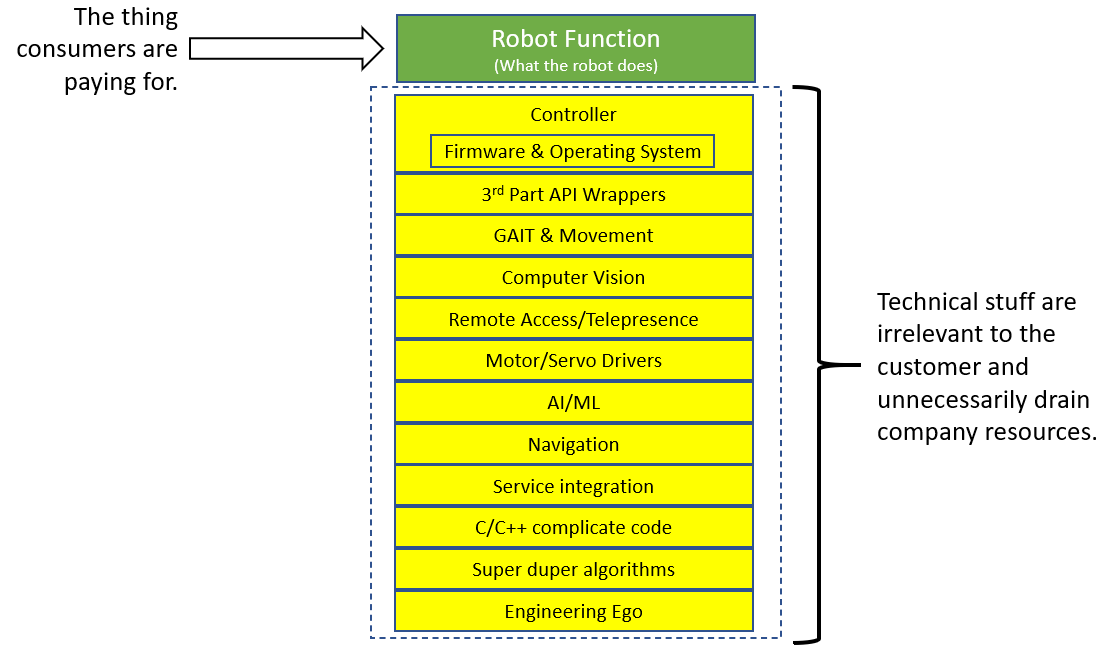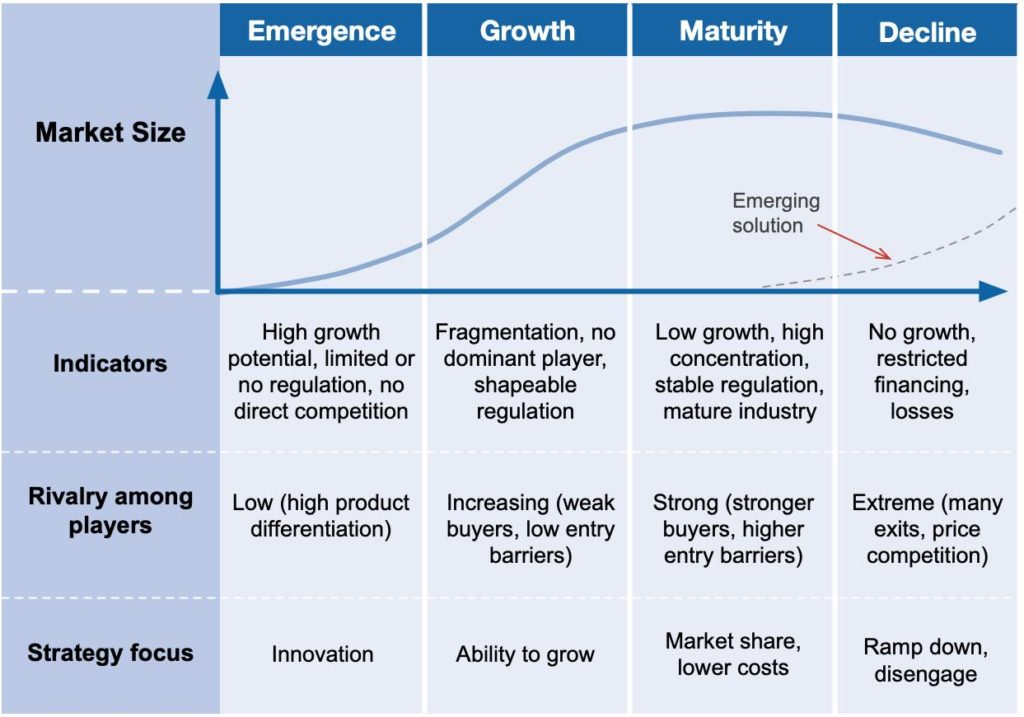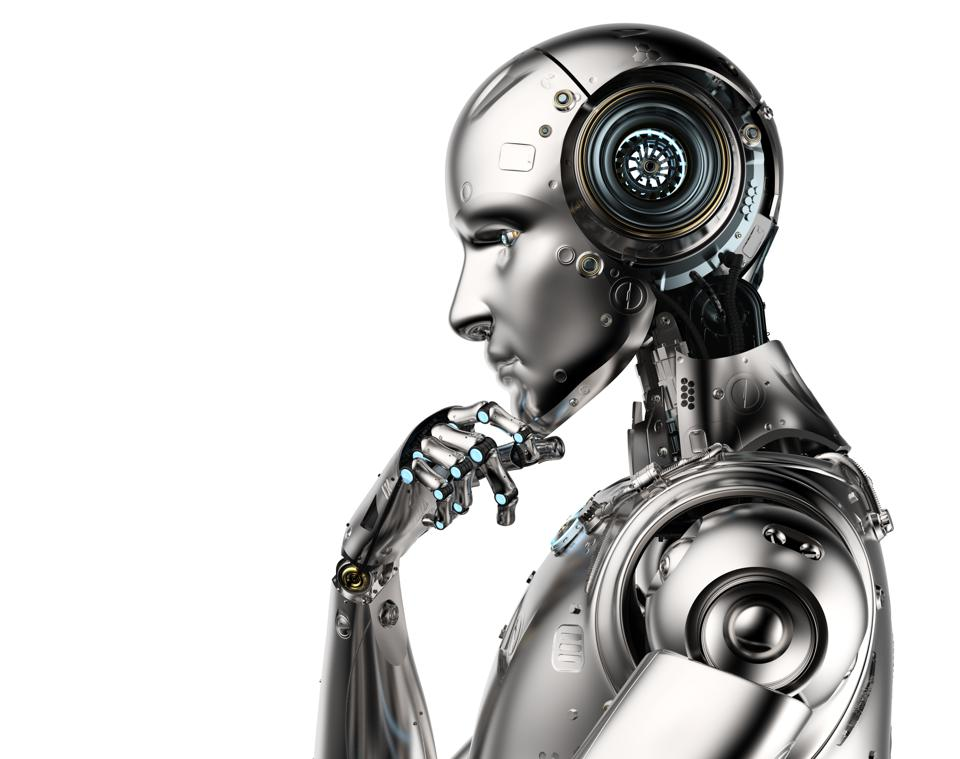
RIP: Anki, Jibo, Baxter, Mayfield, etc...
History foretells the fate of robot companies that attempt the burden of building and sustaining "the full-stack." Similar outcomes have affected companies from all industries where the founding partners were engineers. Today, we begin to ponder the question of where are the robots? Most importantly, why have so many robot companies failed, and what can we do to help robot companies succeed?

Perhaps the noise from social media, politics, and the current Covid-19 situation has caused startups and the investment community to forget a vital part of the industry life cycle stages. Organizations might have also overlooked this because it has also been several years since a new industry has emerged. Even the last few personal-computer sub-industries of mobile devices/apps, VR/AR, etc., have inherited sectors from existing mature and proven industries.

Robotics is a unique industry, albeit not too different from the personal-computer evolution, where multiple disciplines united to form a consumer product. The Personal Computer took many decades to influence and support sub-industries of software, hardware peripherals, and a wide range of use cases. Today, a computing device is user-friendly and esthetically pleasing, and the complex engineering disciplines are well hidden (CPU, operating system, drivers, power management, etc.). Readers may recall early personal-computer diagrams that included input, output, processing, and storage devices. Even earlier than the 1980's personal-computer, a computer consisted of even more complicated engineering disciplines that seemed impossible to scale to what we have today. Today, a computing device is common-place, and the components that make up computing devices are not taught in school as they once were.
The Revolution of Robot Platforms
Today, a child can operate a computing device before knowing how to speak. This results from a mature industry in which every contributor plays their strength by focusing on what they do best when contributing to product development. For example, some profitable companies make integrated circuits with a single function of performing mathematical floating-point calculations incredibly fast; because that is their strength. Another company will manufacturer a button or connector because that is their strength. Again, another produces batteries because it is their strength. The distribution of these disciplines in computing is how organizations can build platforms like Unity, Android, and Wix. Creative entrepreneurs use these platforms to make products that seamlessly integrate with our lives as tools and entertainment. What will it take for the robotics industry to distribute disciplines across specialists and enable creative entrepreneurs to make robot products rather than engineers? Imagine the impact that robot products made by creative entrepreneurs would have on our lives!
So, Where Is My Robot?
 This is the first blog entry in a series titled "Where Is My Robot?". We will cover the robot industry failures, strengths, and areas of improvement needed to fulfill consumer and financial potential. We will reflect on the fallen venture-backed giants that attempted to skip the industry life-cycle steps, such as Baxter, Anki, Jibo, Mayfield, Romo, and many others.
This is the first blog entry in a series titled "Where Is My Robot?". We will cover the robot industry failures, strengths, and areas of improvement needed to fulfill consumer and financial potential. We will reflect on the fallen venture-backed giants that attempted to skip the industry life-cycle steps, such as Baxter, Anki, Jibo, Mayfield, Romo, and many others.
We will examine organizations that repeat Synthiam's message that "too many robot companies focus on the robot and not the business"; however, these same organizations build complex solutions targeted at engineers instead of creative entrepreneurs. In this article by TechCrunch, hardware manufacturers use Synthiam's message that "making robots should be easy" while contrarily designing products targeted at engineers.
In this "Where Is My Robot?" series, other subjects we will discuss are operating system choices that support rapid prototyping for creative entrepreneurs. Most importantly, how using Linux for r&d increases the barrier of entry, adds unneeded operational complexities, and limits productive creativity.
Provide feedback in the comments of topics in this area you would like to see covered. See you in the next blog entry - stay tuned!

PS, shameless plug on Jeff's book. Again - I do recommend it. I warn you, it's an eye-opener!
I feel there is an untapped market for childcare and home schooling. Childcare is a major expense and if robotics ever evolved in sophistication and safety to the point that you could leave your kids alone with the bot while you were away that would be game changing for parents. At this point you are talking about a mechanical nanny with hyper capabilities like streaming video, connections to police and fire, medical diagnosis capabilities, etc.
Perhaps an easier entry point would be a 'home educator' bot. I believe that after Covid there will always be some form of remote learning now. And many people educate their kids at home. A home teacher bot would not need as many capabilities as a full featured nanny bot. The skill set could be narrowed way down. A physical bot may prove more attentive than a screen which kids tend to get bored with after a while. The bot could call up various curriculums to specific standards or the parents could custom tailor them. You could partner with schools for certified curriculum such that teachers in a school provide lessons and the robot operates as a local avatar. I always wonder how people home school their kids in every subject from music to calculus. A edu-bot could understand and teach the most complex of these subjects with the right plan. The bot could also provide real time interactive statistic in how the child is learning and AI could identify methods that allow the child to learn better and focus on those. You would have optimized learning for each and every child that has an edu-bot instead of the one size fits all type of schooling I went to.
It would drive the teachers unions absolutely batty.
I like both of those ideas - your last few ideas have been good as well - specifically the water drone.
This topic is a great interlude to something that I've never really talked about in the past. But it has to do with the way I architected ARC - and why it's been able to support so many new features without being re-invented. Sure, there have been some forced updates that are related to infrastructure changes or bug fixes. But at the core, the design has been somewhat resilient to new features. At least for today's use-case that it is intended for.
The reason I'm bringing this up is why having such grand ideas for robots are essential. Because I'm one of those people who like to build backward from an outcome. Meaning, I think of the most extravagant (yet feasible) goal and work backward from there. I divide the outcome into smaller tasks that each have their outcomes. People who have worked for me, like Jeremie can validate how productive it can be if you're diligent enough to stay on course. And staying on course is the most challenging part because it's easy to be distracted.
ARC's fundamental design was to support a much greater goal - one that I hope you all reach in the next year or two. ARC was meant to support any features we can throw at it, with a create R&D style interface. I designed it that way to support robot builders, like yourself, to make robots do amazing things even though ARC would appear to be a pre-product stage, which is fine. Because once we experience enough robots doing amazing things and there's market validation for those robots to become products, we have ARC plans to do so.
This interlude aims to validate that having those ideas are essential, and Synthiam is dedicated to managing those achievements. It all starts with an idea, and we want to ensure there are tools available to validate and create a proof of concept quickly. I assure you, once a robot product has been validated by the market, we would be there to ensure it gets built!
I understand Hanson Robotics will be mass producting that Sophia robot by end of 2021. Has many orders alreay waiting. Should be cool to see.
I myself have been wanting to build a model to get out in the market. I have wanted to for some time now, and want ARC as the platform to get it going. I want to produce a worthy design that will be simple. One that will be expandable my the customers out there overt time One that will do basic task to startout with (and not the scifi like stuff from tv). I have a plan. Yses I just an engineer not a sales man, but I know some people, will see.
One that will do basic task to startout with (and not the scifi like stuff from tv). I have a plan. Yses I just an engineer not a sales man, but I know some people, will see.
Also, there could be no other reason that huge companies such as Fanuc and ABB are now entering the cobot (collaborative robot) market. There has to be demand from their customers. Who would be naive enough to watch Baxter fail and then years later try to do the same thing, and this is more than a few companies doing this.
Interestingly enough, there is a company that seems to be using messaging that is extremely close to Synthiam's but for the industrial robot Arm market. Check out Ready Robotics and let me know if you see some similarities. It seems that some companies are starting to get what this blog post is all about. I wonder if we'll see the manufacturing market start to influence the consumer market? It will be interesting to see who influences whom.
A ton of robotics companies are succeeding. But a lot of them feel sort of unsexy and incremental, because that's often what solving customers' problems effectively and affordably looks like. There are plenty of of autonomous and teleoperated underwater vehicles out there for naval use, oil and gas, scientific work, search and rescue, boat and pier inspection, you name it. I think a lot of big old players and new small businesses are both doing well there, selling platforms, sensors, accessories, services. I think there are lots of ways to build businesses using quadcopters with and without autonomy. Conventional industrial robotics are growing massively as far as I know. I think autonomous warehouse robots are doing well, but they're flat platforms with tires, not crazy Boston Dynamics ostrich monsters. https://onplanners.com/notebooks/best-notebooks-bullet-journaling
Good Morning all,
Jeremie, great site - "ready robotics" make commercial robots "easy" to program and operate in a commercial business setting - another company to watch